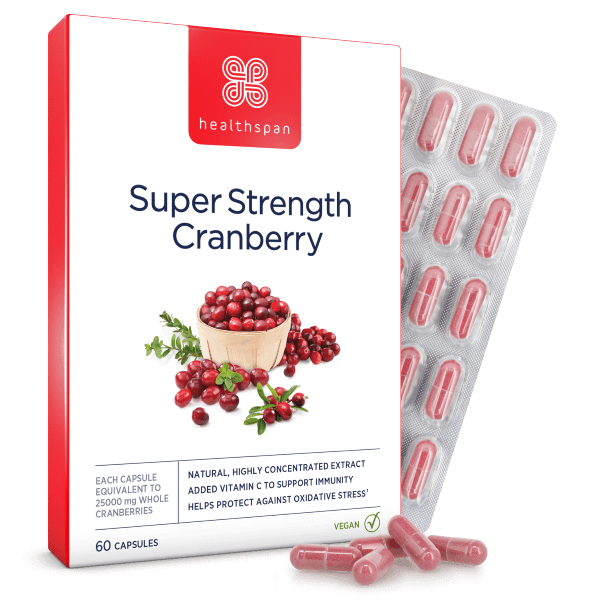A healthy bladder is vital to wellbeing, but as we get older it can start to misbehave. Patsy Westcott discovers how to keep it working as it should.
Most people don't give their bladder much thought – until something goes wrong. Yet it is one of our most important organs, working hard for us around the clock.
With the passing years the bladder becomes tougher and less elastic, so is less able to hold as much urine as before. The bladder wall and pelvic floor muscles, which support the bladder and bowel – and the uterus in women – also get looser. The result? We are more prone to bladder problems.
The good news is that there's plenty you can do to keep your bladder healthy. Here's what can go wrong and the possible solutions.
"I leak urine when I exert myself"
LIKELY TO BE Stress incontinence
CAUSES Increased abdominal pressure – caused by exertion from sneezing, coughing, bending over, laughing, lifting weights, running, aerobics or even walking – in turn puts pressure on the bladder. If the urethral sphincter or pelvic floor muscles are weakened or damaged you are no longer able to hold urine in.
In women, this can be a result of pregnancy and birth, obesity or hormonal changes at menopause. In men, it can be a result of prostate surgery.
TREAT IT
- Pelvic floor exercises to strengthen the hammock of muscles that support the bladder, bowel and uterus can help.
- Ask your doctor to refer you to your local continence service. In severe cases you may need surgery.
Common bladder problems in women
Common bladder problems in men
Post-pregnancy bladder problems
Nocturia: how to stop frequent urination at night
"I get a sudden urge to empty my bladder that I can't always control"
LIKELY TO BE Overactive bladder
CAUSES Sometimes called 'doorstep incontinence' because it often happens when the loo is in striking distance, it occurs when nerve signals between the bladder and brain get out of sync or when the bladder muscles contract to release urine before the bladder is full.
Problems affecting the nervous system such as Parkinson's and stroke can be a factor. In men, overactive bladder can be confused with an enlarged prostate, as they share similar symptoms.
TREAT IT
- Bladder control training, involving passing urine at scheduled and progressively increased intervals, is a key treatment, along with pelvic floor exercises.
- Keeping a diary noting how much you drink, when you pass urine, when you get that urge 'to go' and when you leak can also help.
- Medications, Botox injections, electrical nerve stimulation and physiotherapy are other options.
Symptoms of this chronic condition, which often mimics cystitis, include frequency, urgency, pain in the abdomen and urethra and painful sex.
Possible culprits? An autoimmune reaction, thinning of the protective mucus lining of the bladder, triggering inflammation, and increased sensitisation of nerves. Stress management, CBT and dietary measures may all help, as may certain supplements.
A notable one is L-arginine, an amino acid that promotes blood vessel dilation and may help reduce inflammation associated with interstitial cystitis.
In one study involving 53 people, those taking L-arginine for 3 months showed greater improvement in the L-arginine group (48 per cent improved versus 24 per cent with placebo), with a decrease in pain intensity and tendency toward improvement in urgency and frequency of pain.1
Specialist treatment may be needed.
"It stings when I pass urine"
LIKELY TO BE Cystitis
OTHER SYMPTOMS Cloudy, dark, smelly urine, needing to urinate more often, and to pass urine immediately.
CAUSES Bacterial infection, causing inflammation of the bladder and urethra.
TREAT IT
- Rest and drink more to flush out bacteria. Plain water, barley water or diluted squash are good options.
- Try cranberry extracts, which contain antioxidants called proanthocyanidins (PACs). These bind to the Escherichia coli bacteria (responsible for the majority of urinary infections), which stops them from sticking to the urinary tract wall. Results from clinical trials involving 1,498 women at risk of UTI showed that taking cranberry products reduced the risk of an infection by 26 per cent.2
- Alkalising powders from the pharmacy, which neutralise urine, may help relieve stinging or burning. Alternatively try 5ml (a teaspoon) of bicarb in half a glass of water (but not if you have high blood pressure).
- Paracetamol helps ease pain, while a hot water bottle on your abdomen or back is soothing.
- Mild cases will often get better on their own, but call the GP if symptoms get worse or don't ease in two to three days, or if you are pregnant, have blood in your urine or a fever; you may need antibiotics.

Super Strength Cranberry
Highly concentrated formulation
- 500mg concentrated cranberry powder
- Equivalent to 25,000mg whole fresh cranberries
- Added vitamin C to support immunity
Did you know?
The bladder typically holds 400-600ml (1 pint) of urine, but the urge to pass urine happens when the bladder is about a quarter full.
"I can feel a lump in my vagina"
LIKELY TO BE Bladder prolapse or cystocele. Sometimes known as fallen bladder
OTHER SYMPTOMS Problems urinating, feeling the bladder is not completely empty after passing urine, stress incontinence, frequent urinary infections and painful sex.
CAUSES Solely a woman's problem, this occurs when the front wall of the vagina, which supports the bladder, weakens or becomes laxer. This can be due to age, damage during childbirth or menopausal changes. The bladder may 'drop' and bulge to varying degrees into the vaginal wall.
TREAT IT
- In mild cases, losing weight if necessary, avoiding heavy lifting and avoiding/treating constipation, as well as regular pelvic floor exercise, may hold symptoms at bay.
- Your GP may recommend HRT, to strengthen the tissues in and around the vagina, or a pessary, which is put in the vagina to keep the bladder in place.
- Electrical stimulation and biofeedback, in which a sensor monitors contractions of the pelvic floor muscles, can also help.
- In severe cases you may need surgery.
Try these simple lifestyle changes...
- Stay active: Sitting and inactivity can increase the risk of urinary tract symptoms. Get 30 minutes of exercise most days – walking, gardening and dancing are good options. Pilates and yoga can help strengthen a weak pelvic floor.
- Watch your weight: Being overweight can put pressure on the bladder and pelvic muscles.
- Eat right: Follow a healthy fibre-rich diet – plenty of fruit and veg, pulses, nuts and seeds. Fibre helps to ease digestion and avoid constipation.
- Manage stress: Stress and anxiety aggravate bladder problems. Find ways to manage it: read a book, do a meditation or visualisation, have an aromatherapy bath – whatever works for you.
- Avoid bladder irritants: Common culprits include citrus fruits, acidic fruit juices, alcohol, caffeinated and fizzy drinks, tomatoes, strawberries, onions, spicy foods, sugar, honey and artificial sweeteners, and dark and milk chocolate. Keeping a food diary can identify triggers.
- Drink up: Drink 1.5-2 litres a day. Plain water is the best option.







